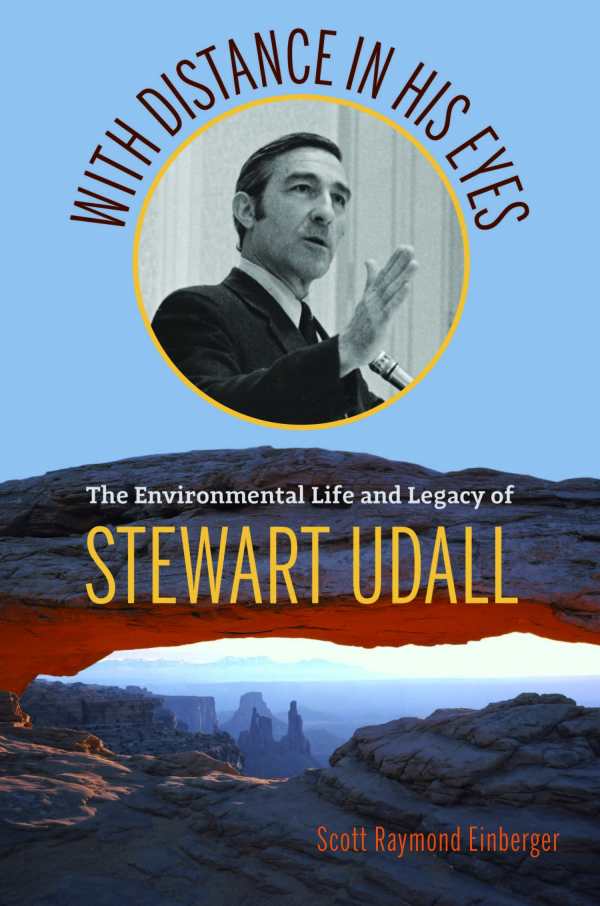With Distance in His Eyes
The Environmental Life and Legacy of Stewart Udall
- 2018 INDIES Finalist
- Finalist, Ecology & Environment (Adult Nonfiction)
This carefully researched, absorbing biography documents the remarkable environmental legacy of Stewart Udall.
The Washington DC headquarters of the Department of the Interior is named after Stewart Lee Udall. This excellent book by environmental historian Scott Einberger explains why. In eight years as Secretary of the Interior under Presidents Kennedy and Johnson, Udall’s accomplishments were legendary. He had a direct impact on natural resources conservation, environmental protection, land preservation, and the protection of endangered wildlife. During his tenure, he wrote The Quiet Crisis, an environmental history that became a bestseller. Udall was an activist against air and water pollution, and uttered the phrase “climate change” long before it gained notoriety.
The book is logically divided into three parts: Udall’s formative years, his body of work as US Secretary of the Interior, and his life after politics. Einberger traces Udall’s impressive career from his start as an Arizona congressman through his cabinet position to his post-political life as a private citizen who continued to publicly lead, speak, and write about environmental issues. Throughout, Udall’s environmental vision and innovation are highlighted.
One of the most insightful aspects of the book is Einberger’s assessment of why Udall was successful in his role as secretary. The author lists eight key reasons, including Udall’s conservation trips, his outstanding staff, his writing expertise, and his ability to compromise. Einberger notes that Udall was a “major contributor” to the passing of at least four key environmental acts, including the Wilderness Act and the Endangered Species Preservation Act. Lesser known, perhaps, and well documented by Einberger, is the fact that Udall continued his fight for environmental quality long after he departed the nation’s capital.
Einberger offers extensive notes validating the material in each chapter. He also draws several perceptive conclusions about Udall’s lifework, not the least of which is that he served “as a model for ‘working together’ and bipartisanship.” This is a relevant biographical study of a significant American environmentalist.
Reviewed by
Barry Silverstein
Disclosure: This article is not an endorsement, but a review. The publisher of this book provided free copies of the book to have their book reviewed by a professional reviewer. No fee was paid by the publisher for this review. Foreword Reviews only recommends books that we love. Foreword Magazine, Inc. is disclosing this in accordance with the Federal Trade Commission’s 16 CFR, Part 255.

